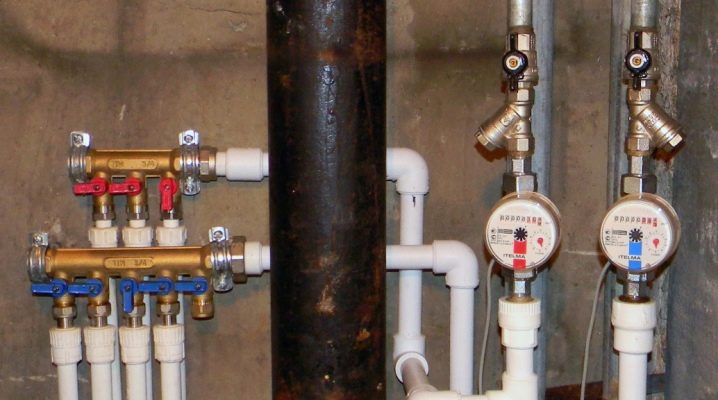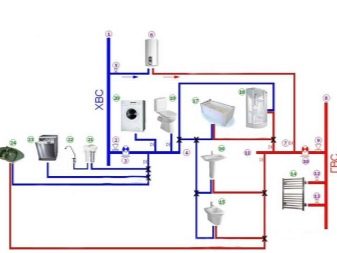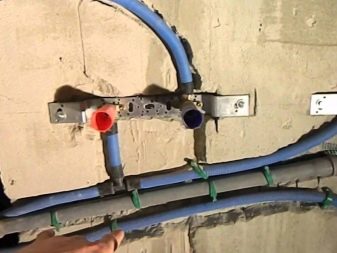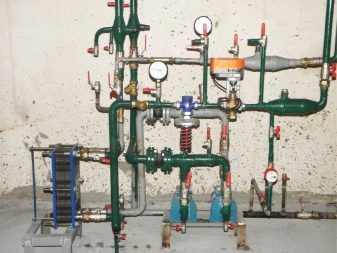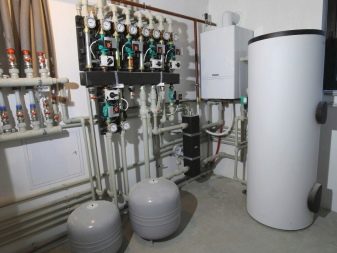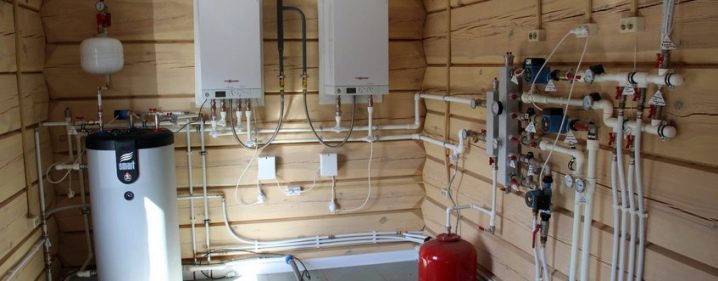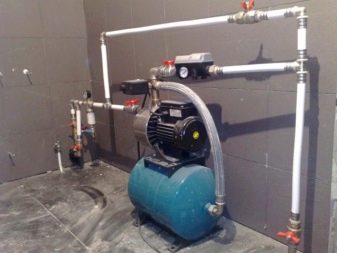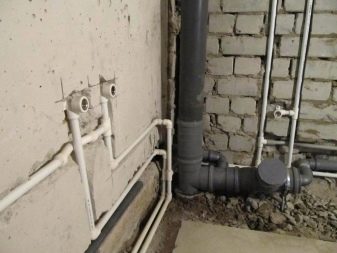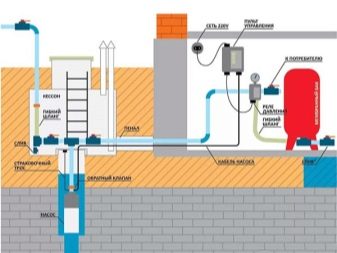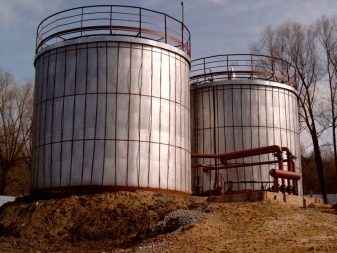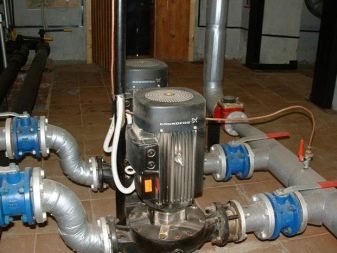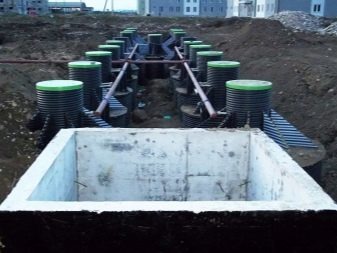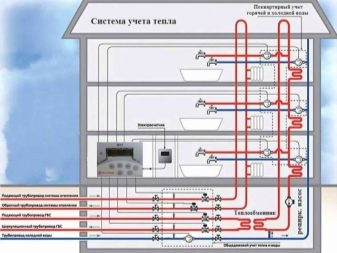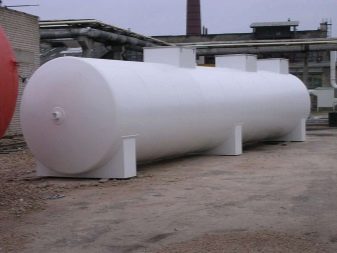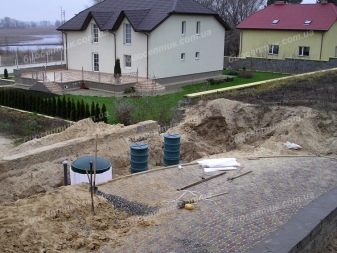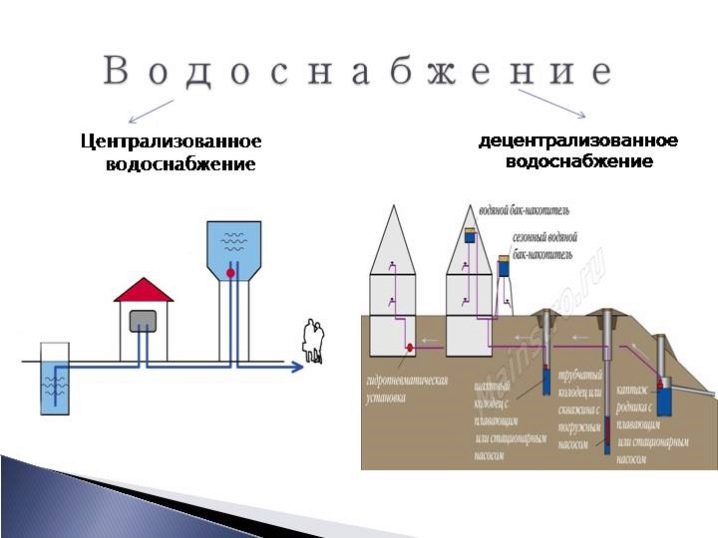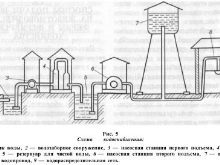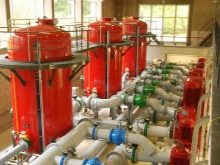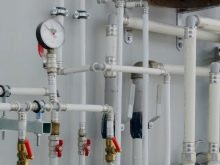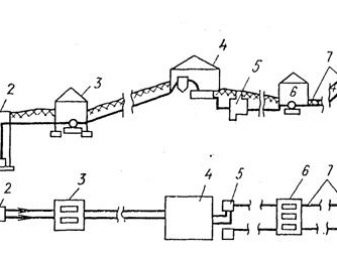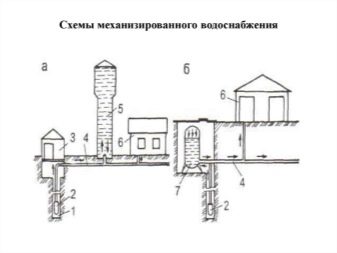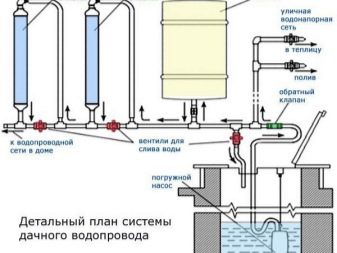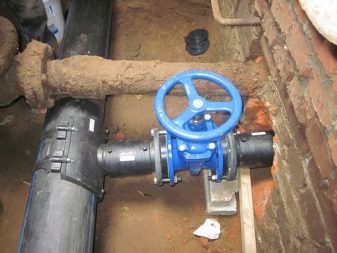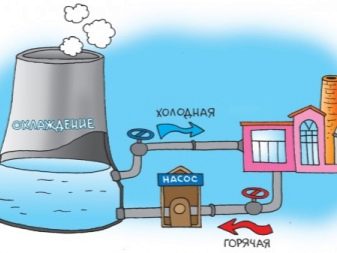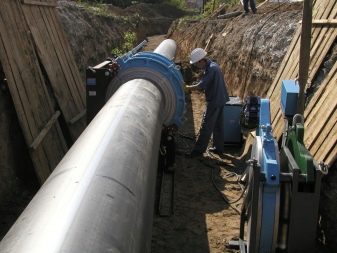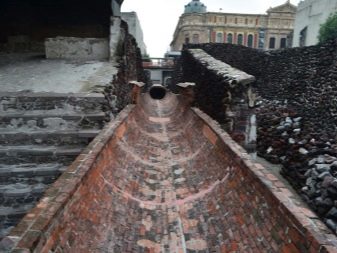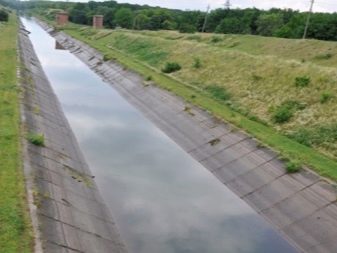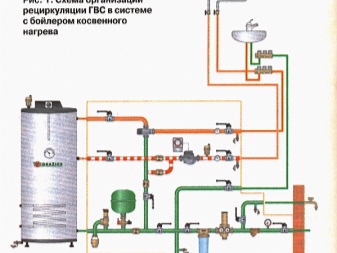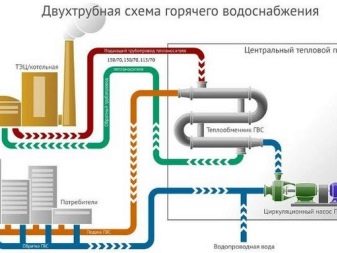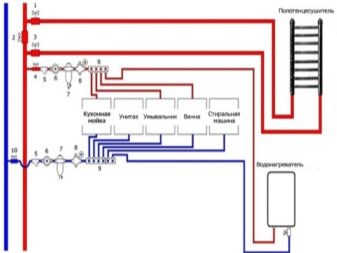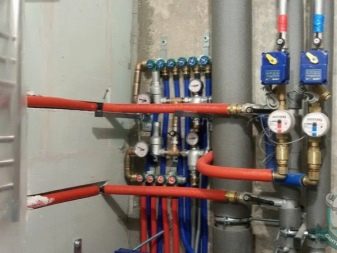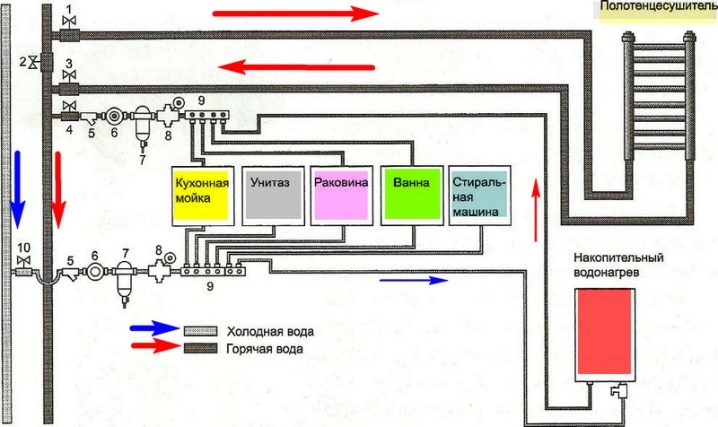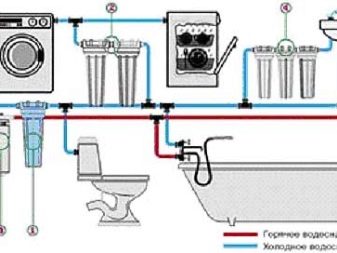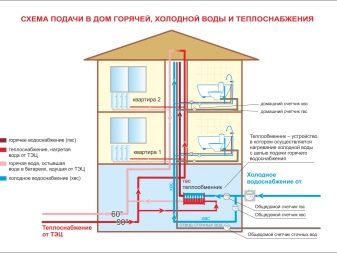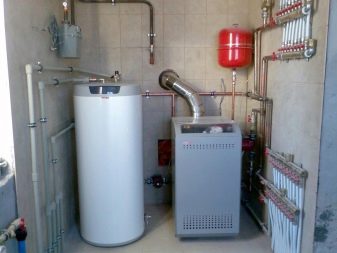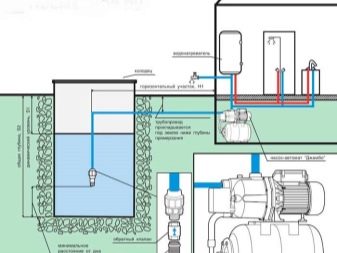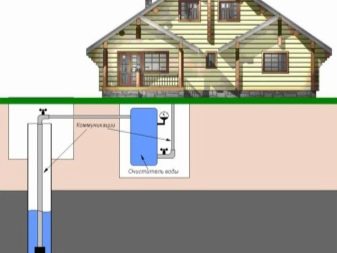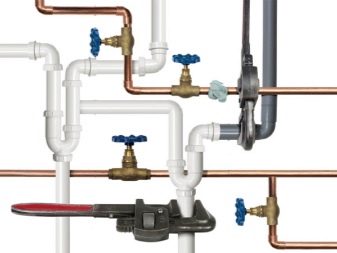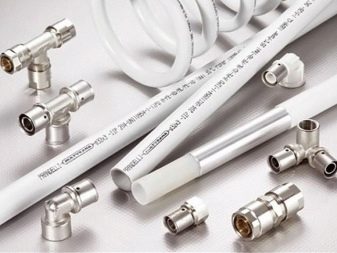How is the modern water supply?
The owner, who wants to build a house from scratch, bring the neglected building to mind or simply keep the entire situation at the site under control, be sure to know how the water supply works. Over the past decades, this system has become so firmly established in our life that without it, it is almost impossible to imagine a normal existence, so that an understanding of the principles of operation, and even repair, is quite useful information necessary for everyone.
Definition and description
Water supply is the organized delivery of water from underground or above-ground type sources directly to the consumer in accordance with the required quantity and quality indicators. The water supply system includes all the necessary engineering structures that ensure such delivery.In short, this system can be described as a familiar water supply.
If we are talking about independent organization of water supply for your own site, you should choose the source of water as carefully as possible. Sometimes it is more practical to immediately spend money on the arrangement of a complex system that reaches the source that satisfies all the requirements in full, rather than agreeing to half measures that only partially satisfy the demands.
Requirements for sources are varied, but logical.
- The selected source should provide the required amount of water at any time, preferably with a substantial supply. A complete system, organized for a country house, should provide for the drinking needs of people and animals living here, the uninterrupted operation of sanitary facilities, and, if necessary, watering the garden. The reserve will be needed at least in order to water the garden intensively in extreme heat or to cook in compressed fruit in urgent quantities in time of ripening fruit.
- Water supply stability is another important source selection criterion. If he is in a strong heat can dry up or shallow,the source will no longer be able to meet the first criterion, which means that even an excess of water in all other seasons will not override this minus.
- The quality of the water supplied is one of the determining factors. There is no good with the huge reserves of industrial water, if the population has nothing to drink. For a dwelling house or a dacha, it is better to choose such a source that provides the highest quality water: either an already required quality level, or one that can be cleaned without much expense and effort.
- Profitability of water supply is a moment that can negate the previous factors, but you need to look at it in the penultimate place. Sometimes, due to the remoteness of the source, the construction and operation of a water supply system can be costly, but it is not a reason to drink industrial water. Paying attention to profitability is only when comparing two sources that are identical in all the above criteria.
- Finally, the capacity of the source, from where it is planned to take water, should significantly exceed the needs of all who use it, including the ecosystem itself. Predatory use of natural resources in a few years can lead to desertification of the region, which is unlikely to please the owners.
Standards
Globally, the nature of the water supply depends on the needs for which the water supplied by it will be used. All current requirements as of 2018 are set out in SanPiN 2.1.4.1074-01 “Drinking water. Hygienic requirements for water quality of centralized drinking water supply systems. Quality Control ”, although they relate, as the name implies, mainly to drinking water. In the case of a country house, the water supply must meet precisely these requirements, since the water described in the document is considered the only one suitable for drinking and cooking, as well as sanitary and hygienic procedures of all kinds and agricultural needs.
However, it also happens that supplying such water is problematic, or its quantity is very limited. In some areas, there are actually two water pipelines, one of which supplies expensive, but perfectly clean water, and the other is inexpensive, which is classified as industrial water. In the case of garden plots, such water can often be used to irrigate fields, but it is no longer suitable for drinking.On occasion, it can be useful for other needs, for example, it can wash the car.
Finally, there are also so-called water pipes for fire fighting. Water from here does not meet any standards at all - it is simply fed into special tanks in case of an emergency in order to extinguish the raging flames. Purposefully, no one will connect the site to such a system, if we exclude the option of fraud, especially since they can be punished for taking water from there and its improper use.
Components
Although for most of us, plumbing is quite common, in fact, in almost every case, it is a complex engineering structure. Knowledge of its components and orientation in the classification will help to keep the water supply system in a healthy form longer, and in case of a breakdown - to quickly determine its cause.
Main elements
The standard configuration of the water supply system does not exist - it is re-designed every time, taking into account differences in the types and quality of sources, as well as in customer needs. In any case, the system always begins with a source of water supply (one or several), which is the last natural object at the junction with man-made.
- Water intake facilities They are used to receive water from natural sources for its further transfer to the system. Depending on whether the source is located on the surface or under the ground, such structures may have a fundamentally different appearance.
- Pumping stations provide high pressure so that the water taken from the source under sufficient pressure is continuously fed through the system further. As a rule, in large water supply systems such stations are quite numerous, they are found at all stages of water supply from the source to the consumer. They are especially relevant where there are strong elevations in the system, for example, if water is taken from underground sources or it needs to be supplied well above the first floor.
- Sewage treatment plant they are designed to improve the quality of water if initially it did not ideally meet the stated requirements at the source, which happens in the vast majority of cases. In the case of a well in its own area, even the filter installed in the caisson can perform such functions. In the case of supplying entire villages, such a structure can reach the scale of a separate large enterprise.As a rule, after cleaning, water begins to meet drinking standards, although when it is run through old pipes, the effect of the procedure is often completely leveled.
- Waterways - this is what ordinary people often consider their own plumbing. A conduit is a network of pipes used to transport water throughout the system. Often, such a network is additionally equipped with non-return valves that prevent reverse supply of water in the presence of a slope.
- Water storage facilities They are usually characteristic of mass-use water pipes and are towers or special large-scale tanks. The presence of such structures often avoids a catastrophe or minimizes its consequences if a force majeure situation occurs, for example, because of a drought, sources shrank up temporarily, or because of a breakdown, the water supply in the system stopped.
- Sewage It is not a mandatory element for each water supply system, however, in the case of residential buildings, the presence of drainage is very welcome. Equipped with sewage, the system assumes that polluted wastewater is discharged into a designated place,and before that they are at least superficially cleaned of harmful or polluting components.
Classification
It is possible to classify water supply systems according to several criteria, which are mandatory for each water supply system.
There are five types of water supply to the destination.
- Centralized water supply of cities and towns provides for the communal ownership of the entire infrastructure so that water is supplied to all users on the general principles This option is good because in the event of a breakdown, the state structure, which has the necessary specialists in its staff, deals with repairs.
The disadvantage is that in our country government systems often work mediocre and do not provide the highest quality of service. Typically, such systems supply water classified as drinking water, although the actual quality level may not correspond to this. In large cities, the centralized water supply is not only cold, but also hotter - the system also includes boilers and a separate water supply for hot water supply.
- Decentralized water supply It is the antipode of the central, because here every owner provides water for himself, without the participation of the center. This refers to both the internal water supply of an industrial enterprise and the water supply system of one or several sections, which is in no way connected with the system of surrounding areas. Non-centralized supply can be both technical and drinking: it depends on how much water the consumer needs and where it comes from.
- Agricultural Water Systems almost always they supply medium quality water that does not reach drinking water, but is also not technical in the worst sense of the word. Such water supply is always exceptionally cold, the water from here is usually suitable only for irrigating land, and is not suitable for other purposes.
- Fire Fighting Supply delivers water in the form in which it is, no requirements for its quality is not put forward.
- Combined water pipes intended to deliver water of several of the types described above, so the water in them must meet the highest standards.
Depending on the mechanism of fluid supply, the systems are divided into the following types:
- gravity or gravity systems in their work exclusively use the force of gravity and the slope of the terrain (the source is usually located in the mountains or on another elevation, while consumers are located in the valley);
- mechanized systems are forced to use pumps to supply water not only from the top down, but also in the opposite direction, as well as to provide the necessary level of pressure in the pipes;
- zone systems are usually large enough to use both methods in their different parts.
According to the sources from which water enters the system, water mains are divided into three types:
- most consume water from open sources, mainly rivers and lakes;
- in some cases, the water supply system is powered from sealed sources, among which are springs and artesian wells that are invisible from the outside;
- mixed feed water mains use the sources of the two types mentioned.
According to the way the supplied liquid is used, water supply systems are also divided into three types.
- The direct-flow water supply system assumes that all the supplied water will be used strictly once, after which it will go down the drain.Systems of just such a plan are used to supply high quality water, because it is difficult to imagine the reuse of wastewater for the same drinking or irrigation of fields.
- Circulating water supply involves the repeated use of water with repeated treatment within the system itself without discharging waste water. As a rule, such systems are used exclusively in industrial plants, where there is a high probability of contamination of the effluent up to their toxicity with high water consumption. In this regard, such a water supply system may not have water intake components - water was supplied to the closed system only once and since then it has been circulating without loss.
- A plumbing with repeated use of the liquid suggests that after the first use, the supplied water has not completely lost its quality, so it can be used again for another type of procedure without additional purification. For example, in an industrial enterprise, drinking-quality water is used for the initial rinsing of a new, just released container, and then it can be used again to clean floors or cars.However, it does not circulate in the system forever - after the second or third use, it still falls into the sewer.
Materials and technology
The very first water supply and drainage systems used fairly primitive technologies: water was supplied solely due to the force of gravity, and not the most reliable wood and bamboo or deadly dangerous lead were used as materials for pipes. Naturally, there could be no question of cleaning, because now such a water supply system is completely and irrevocably outdated.
Even in ancient times, specially dug canals served as an alternative to a massive supply of water., the bottom of which was lined with stone or smeared with clay. This technology in a substantially modified form is used today, only waterproofing is provided by more reliable concrete blocks. The water supplied through the channels can be used as a technical and for irrigation of land, and as for drinking, for this, it must first be carefully cleaned.
Today, both water supply and wastewater disposal are mainly through the piping system.If we talk about the materials from which they are made, then steel, copper or plastic pipes are usually used for the supply of clean water, and in the case of sewage, all the above-mentioned cast iron products are used.
If we talk about plumbing in the scale of large cities and high-rise buildings, then to provide them with water, high-pressure circulating pumps are used. The use of such equipment and elementary standards of sanitation and public health put forward special requirements for trunk pipes - they can be made only from brass and copper, as well as plastic, but not any, but PEX-polyethylene, which is tailored with special equipment. Only these materials are able for many years to withstand huge volumes of water pumped under high pressure without contaminating them with their own impurities.
How it works?
Understanding the principle of operation of any mechanism allows itself to be truly considered its master. A person who clearly understands how the plumbing works in his house can properly plan various plumbing work.If the apartment or house is only at the stage of purchase or construction, you can determine in advance how profitable and convenient for operation will be the finished system.
In the apartment
In the apartment building, water supply is probably centralized, so it’s enough just to connect to the existing system, but this is only at first glance. The fact is that the layout, that is, the water supply to the apartments, in different projects is carried out differently, which gives certain advantages and, of course, disadvantages. The main types of wiring distinguish two - collector and trunk.
- Collector type wiring is relatively rare. In this case, water is centrally supplied to the collector, which can be one for the whole house or one for the floor. From here, each consumer receives water on equal terms through his own pipe that goes to the apartment. Thanks to this, for example, it is very convenient to shut off the water in one apartment, without interfering with the whole entrance, which in organizational terms is very important for repairs.
At the same time, the “pockets” existing in the construction often do not allow to completely empty the water conduit, therefore, during repair, excesses in the form of flooding are possible.In addition, the length of individual pipes for each apartment increases several times, so the cost of materials and installation in the case of replacement increases many times.
- Trunk type in our time is more massive, for modern high-rise buildings, it is rightly considered the standard. No collectors are provided here - all consumers take water from one water main in order of priority, as it would be on the river. Any repair of the pipeline, or even a separate pipe, requires shutting off the water supply for several consumers at once, which complicates the organization of repair, but emptying the pipeline is much simpler, because leakages during repair are unlikely.
“Personal pipe” for each apartment turns out to be short, therefore every owner will be able to replace it without astronomical costs. If necessary, you can easily hide such a pipe in the grooves so that it does not spoil the design of the room.
Water is supplied under pressure anyway. As for the sewage system, then within the apartment it is usually mounted with a slight bias towards the exit in order to ensure the natural flow.As a rule, sewage pipes are equipped with special shut-off valves, which even in the event of a system malfunction will prevent the flow of drains in the opposite direction.
The exit from each apartment is provided through the main riser, which can be either moved to the bathroom or embedded into the wall. In the latter case, the riser is extremely rarely repaired, the walls surrounding it from all sides provide it with additional strength, but if it is placed in the room, then its replacement requires the consent of all neighbors from above to completely overlap the system during work, otherwise the drains will flow directly into an apartment.
In a private house
On the plot, the water supply system can only be a component part of the centralized, and can be completely autonomous. In the first case, everything is relatively simple - water is taken from the main pipe, but the disadvantages of this solution were mentioned at the beginning of the article. If we are talking about a decentralized water supply for one section, then the plan looks much more complicated, but with the proper organization of the system, complete independence is achieved with high quality of the water supplied.
Once the central water supply system is discarded, either a well or a well can be the source for connecting to it. Open reservoirs such as a lake or a river are rarely used for a private house - usually the water in them does not meet sanitary standards, and it will not be easy to clean it with the efforts of a single dacha from river to drinking. Consequently, underground sources are used, which, being located at a considerable depth, have already undergone a preliminary natural purification due to the layers of sand that have been traversed.
The depth of such a source is highly dependent on the specifics of the terrain, but it is almost never less than 10-15 meters. For pumping into external networks, pumps located at the appropriate depth are necessarily used. In the same place, in a caisson, filters are usually located, which are more important, the smaller the depth at the source. Consequently, water is supplied outside under pressure and in purified form. When entering the pipe system, a control and regulating unit is usually installed, measuring various indicators and allowing them to be monitored.
To supply water from a well or well to the house, a pipeline is being built, which can be either underground or outside.The first option usually looks preferable because it protects both the pipes themselves and the water flowing into them, but it is more expensive due to the need to dig a trench, and also does not imply easy access to the pipes in case of necessary repairs. On the other hand, in winter, the pipes left in the cold will not only not function, but may also burst.
Metal pipes are not a leader either in terms of quality or in terms of cost., but on the other hand they do not require specialists and special equipment for their installation - a skilled master armed with household tools suffices. Polypropylene is considered a relatively inexpensive material, providing a reliable seamless connection and able to last for decades. Cross-linked polyethylene is good because it is not afraid of even freezing, because you can not hide it underground, it will still serve for at least half a century. Finally, copper remains the most expensive material, but it doesn’t have a service life at all, which is why it is considered eternal, and it looks very aesthetic.
The described pipeline delivers water to the plumbing fixtures, however, in order to supply not only cold, but also hot water, the system should be complicated with a water heater.For the needs of a private house, they use both classic boilers that heat water only for plumbing and double-circuit boilers that supply hot liquid to both the plumbing system and the internal heating system.
Centralized sewage in the areas of one-story buildings is extremely rare.Therefore, every owner should solve this problem on his own. Digging of a cesspool is inevitable, but it can be both closed and brick-lined according to the chess principle. The last variant cannot be called ideal, because drains, in fact, are dumped into the ground of their own plot, and, although they are filtered due to passable layers of soil, they still return back to the system through a well or well. A closed cesspool necessarily requires a periodic call of vacuum trucks, however, it is possible to reduce the frequency of calls to them, if you use special chemicals that accelerate the decomposition of waste.
Operating rules
The rules governing the particular use of the water supply system may differ depending on who owns the network and its individual nodes.Standard rules for the operation of the water supply both in the conditions of the apartment, and on their own personal plot, assume only periodic inspection of the system for leaks and other defects, as well as repair and replacement of individual components of the water supply system as needed.
DIY water supply is shown in the following video.
